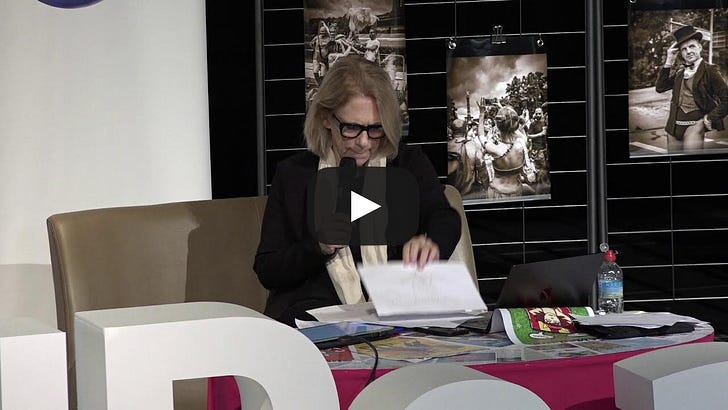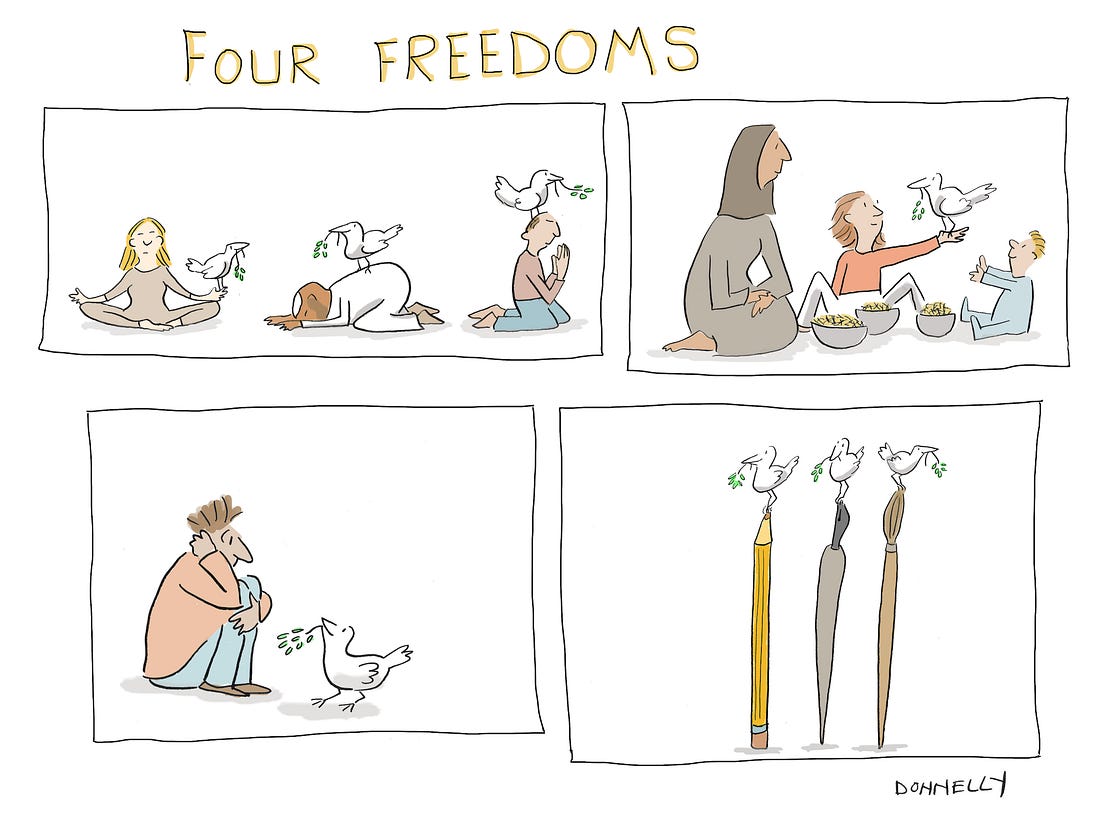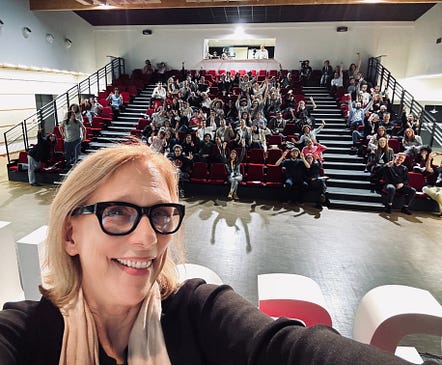|
Yesterday, I spoke to a group of about 70 students attending an international forum sponsored by EU Peace at the University of Limoges in France. The group represented 7 different Europe and Eastern European countries. I spoke about the importance of cartoons in political discussion and in culture, and about my career trajectory. I told them about Watergate and the cartoonist Herblock (I grew up in Washington DC around then), which sparked my political cartooning, the 2005 Danish Cartoon Controversy, Cartooning for Peace, where I met so many international political cartoonists, the tragic 2015 Charlie Hebdo murders of cartoonists. I figured many of them may not know about the two news events that involved international cartoons. I was asked to speak from an American perspective about free speech and women’s rights— I didn’t get too specific on politics, but mentioned that the US was going through a very turmultous time (of which of course they are aware) and that many in our country were fighting and protesting to save our democracy.
I spoke about the importance of dialogue and communication, of sharing and kindness and humanity as I showed them around 40 slides of drawings of mine on various politcal subjects. I said what is important right now, particularly in the face of AI, is the human hand, the human eye and human empathy. Global connectivity.
I told them about FDR’s 1941 speech in which he speaks of the Four Freedoms: Freedom from want, freedom of religion, freedom of speech, freedom from fear. I shared the famous painting that Norman Rockwell had done based on FDR’s speech. And I shared a version that I drew several years ago—in my version, “speech” is depicted as drawing.
At one point in my remarks, I said to the students that I know what I am saying to you may seem naive or overly optimistic. But I have to be. How can we not? Apathy gets us nowhere.
Then for the second half of the program, I drew with them. The hosts had set up my iPad to be projected onto a large screen, and they all had paper and pencils. The students were not art students! But as we drew together, I talked with them about symbols and how they can be used to communicate across borders. At first, we focused on peace symbols of various kinds, and they were very creative in coming up with ways to use them in the context of other drawing. I asked them what symbols might be used in their countries that I might not be aware of, and they shared those. It was really cool to hear their perspectives and see their drawings. One young man drew a pretzel in the shape of a peace sign— he was from Germany! Another young woman from Azerbaijan drew mountains and talked about their symbolism in her country.
Drawing with people is magical. It’s similar to in my documentary where I draw with my fellow cartoonists as we talk about our lives, work and the world. One learns so much about the other person. In this case, I learned about the countries these students are from, as well as a little about them individually.
Afterwards, many came up to talk to me further. Notably, except for one man, it was young women who wanted to thank me and take a photo together with me. I interpret that to mean that being visible as woman public speaker is important for young women to see. It’s still too rare, I fear.
The talk was recorded on Youtube:

Thanks for being here! See you tomorrow.
You're currently a free subscriber to Seeing Things. For the full experience, upgrade your subscription.

